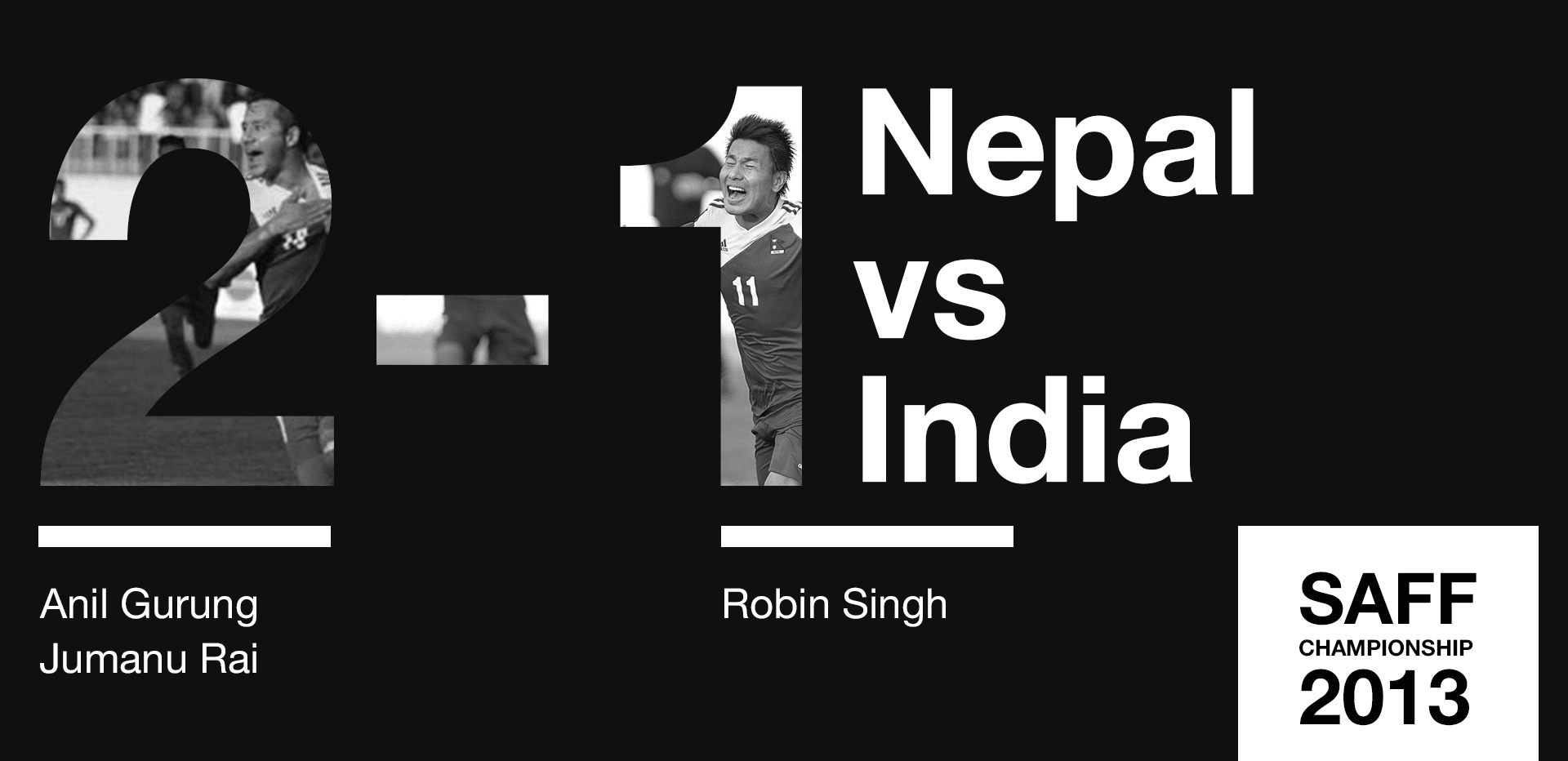Sept. 5, 2013.
Nepal faced India in the last group stage fixture of SAFF Championship in front of a packed Dasharath Stadium. After drawing Pakistan in the dying seconds with a heroic Bimal Gharti Magar goal, Nepal were high on confidence, whereas Wim Koevermans’ Blue Tiger had the odds in their favor – India had a long standing record of no losses against Nepal for more than 20 years. Jack Stefanowski’s Nepal had the much-needed momentum, whereas India were prepared to stun Nepal yet again at their own home.
After a relatively competitive ninety minutes, Nepal emerged victorious in a convincing manner. One moment that stood out for the hosts, in the 2-1 win, was the second goal of the match that put Nepal 2-0 in front. Not only did it serve to seal the fixture and display Rabin Shrestha’s impressive acceleration, it displayed all that Stefanowski’s Nepal did to India throughout the match.
Let’s look what makes this goal tactically better than it looked and how this was a long time coming for Nepal. First of all, let’s see how Nepal’s tactics and aggressive pressing made things difficult for India.
India opted to go for a 4-1-4-1 formation with Mehtab Hossain playing between the lines and Sunil Chhetri acting as the sole target man upfront.
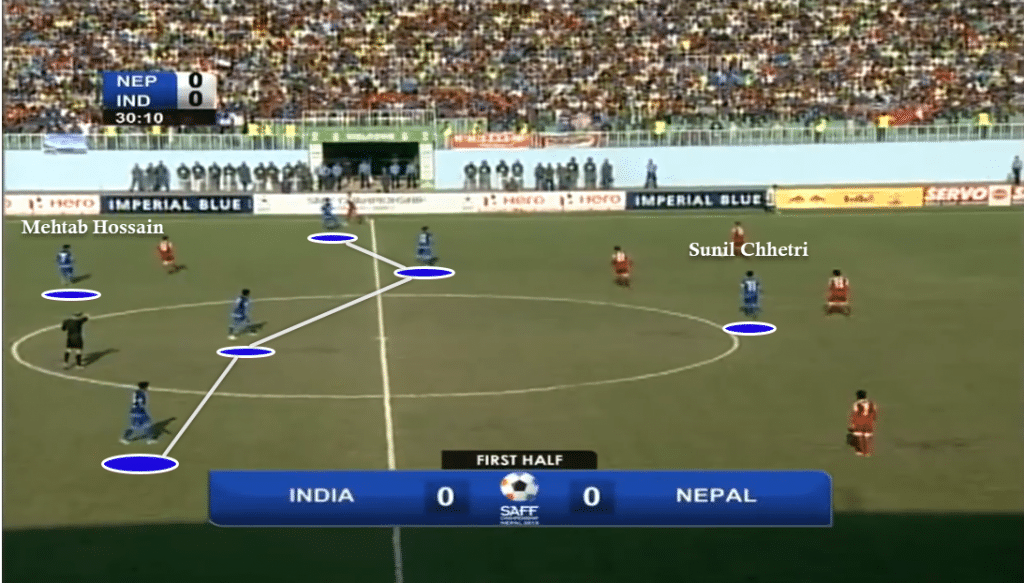
Although Stefanowski fielded a flat 4-4-2, Nepalese players were instructed to press aggressively from the very first minute. The press immediately put India on the back foot, making them struggle to play the ball out through Mehtab Hossain. This lack of supply meant Sunil Chhetri was isolated in front, hence easing pressure off the Nepali defense.
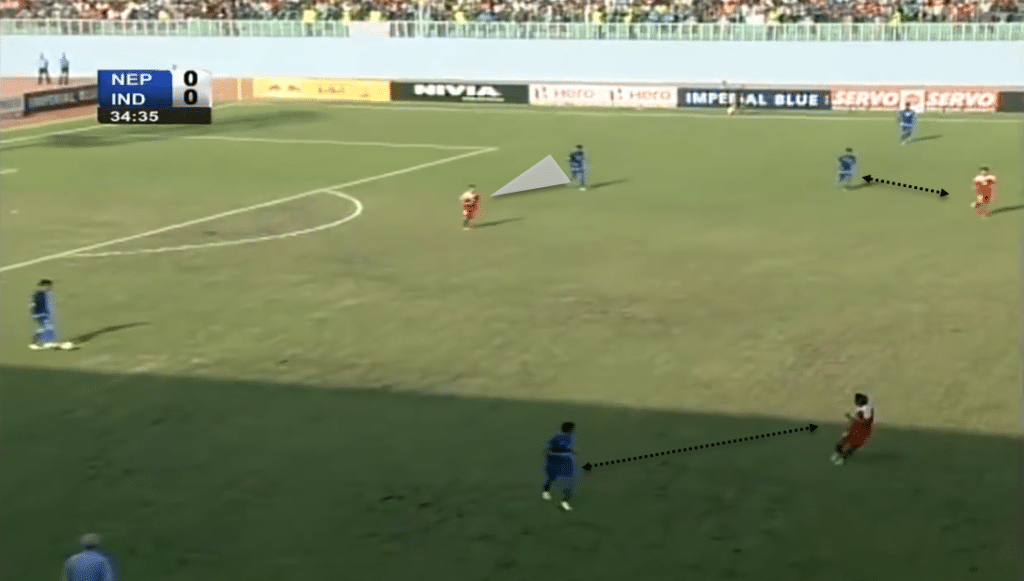
Since Nepal were pressing with a relatively flexible strategy and were somehow able to contain India from advancing forward, India started to form chunks of overload around the ball.
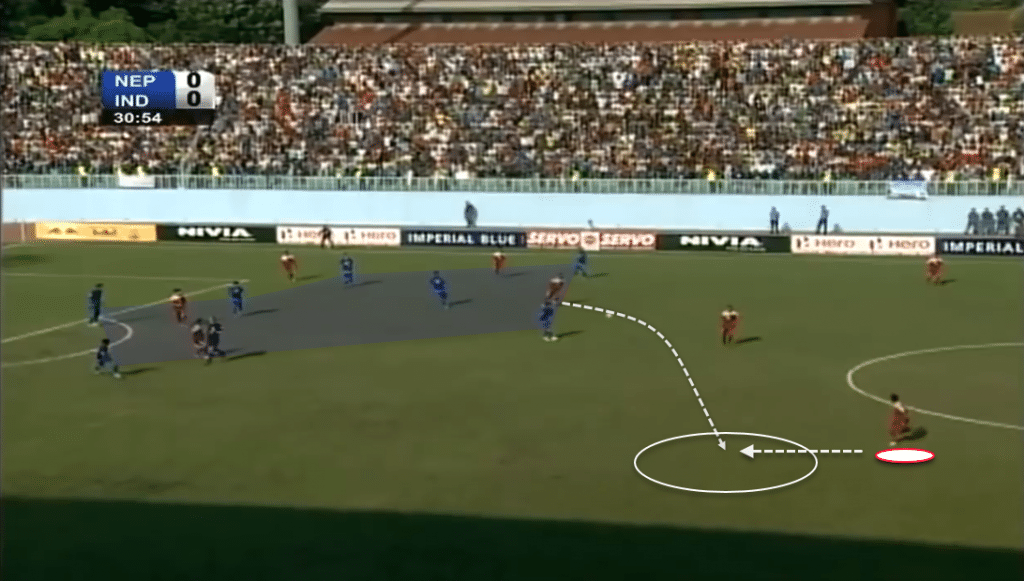
Although India intended to use the overload to create progressing channels and numerical superiority around the ball to at least retain the ball, the move allowed Nepal to create spaces. Like we can see in the above instance, the left overload has created free space for Rabin Shrestha to receive and move forward.
Yes, India’s zonal overload, the spaces created in the process, and Nepal’s ability to switch plays knitted one of the most iconic goals ever scored at Dasharath stadium. Here’s how it all unfolded:
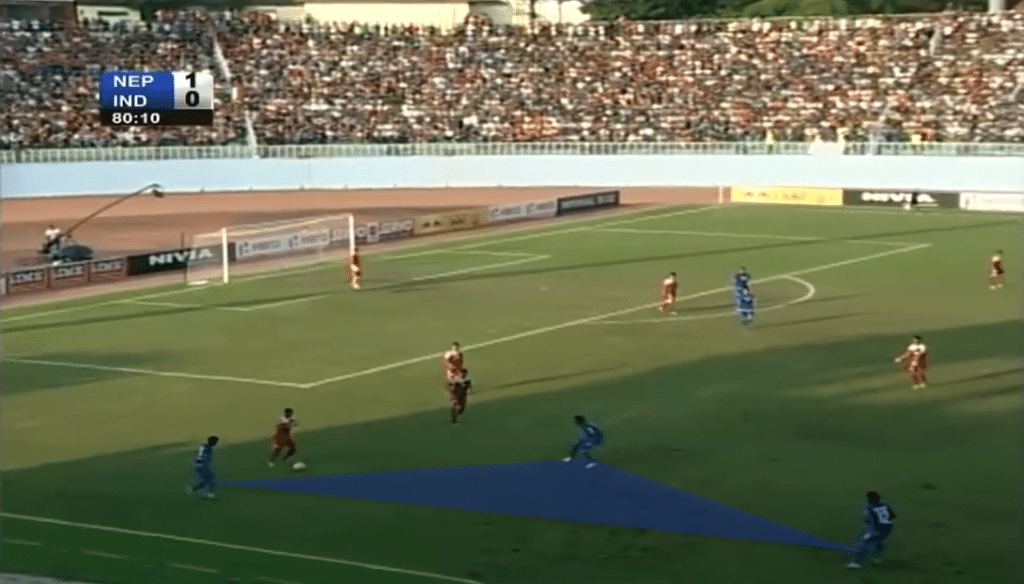
With Anil Gurung’s sixty-ninth minute strike, Nepal were leading dangerously with India looking to pose some serious threat to in the last ten minutes. In the eightieth minute, Bharat Khawas recovered a loose ball towards the right side, shown in the instance above. We can already see an overhaul towards the right from Indian players, leaving the central space wide open for Khawas to pass.

Here we can see Khawas doing just that, spotting the space for central man and passing the ball in central space. Also, one thing worth noticing is India’s front two, Sunil Chhetri and Robin Singh (brought on for Jeje Lalpekhluwa) staying rigid and waiting for the ball to come for the equalizer.
Now, Bharat Khawas releases the ball towards the central space…

Just after the release, the central player makes two oppositions commit to him and releases the ball towards the player in space just in time. We can notice left-back Rabin Shrestha making a run from the wide, seeking a wide pass from the receiver.
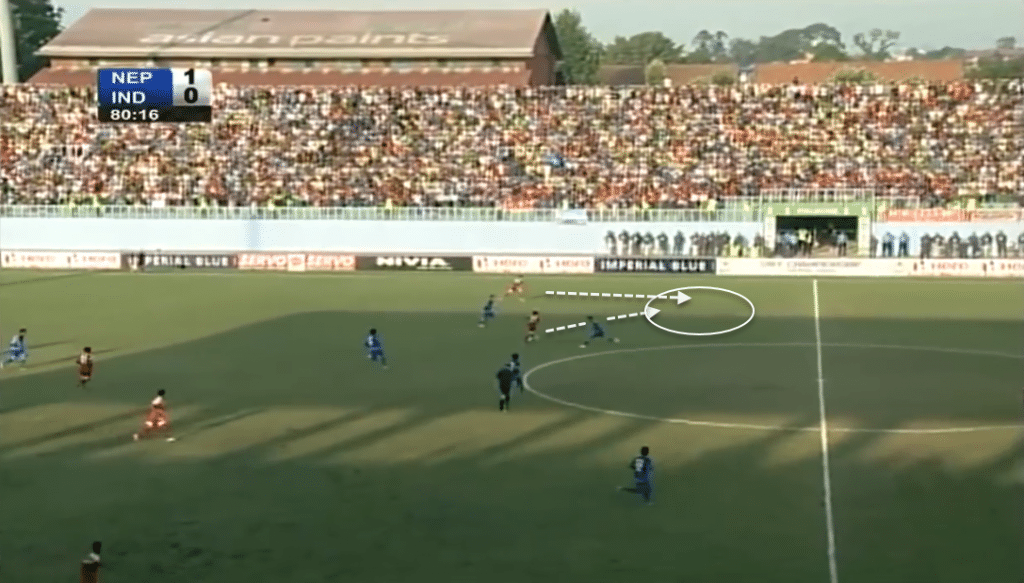
Rabin Shrestha, sprinting from the left side, gets the ball slightly in front, allowing him to use his pace to meet the ball. Also, the Indian player, between the passer and the receiver, hesitates for a moment, looking to commit to either the passer or the receiver. In this split second, he loses Shrestha’s run and allows him to continue going forward.

Now, it’s all on Rabin Shrestha and his press. A moment of hesitation from his marker has allowed him all the time and space in the world to progress forward.
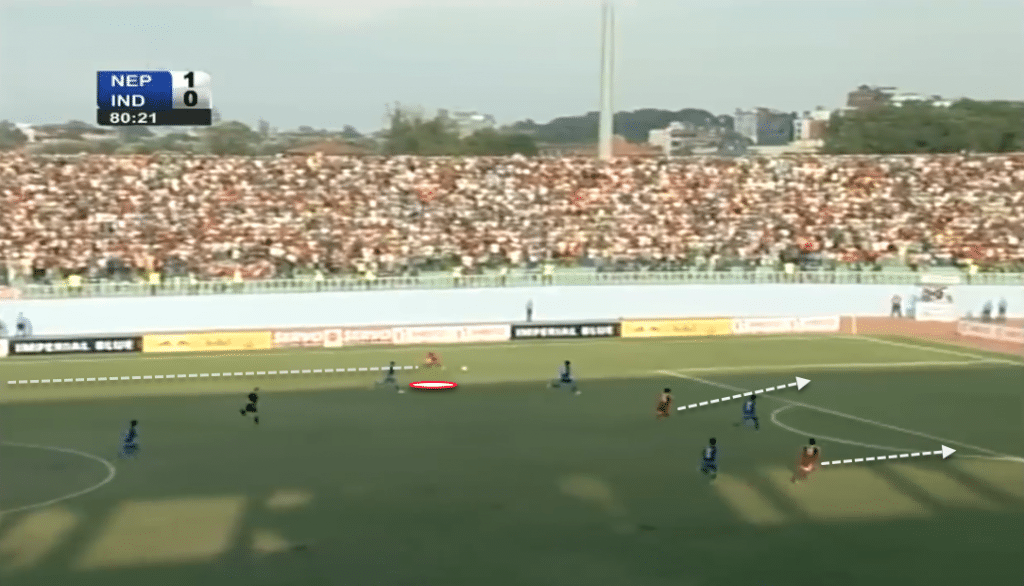
Now for the final move – we can see two forwards, Jumanu Rai and Anil Gurung making blind side runs. This creates an effective 2v2 situation, provided that the player ahead of them commits to Rabin Shrestha to limit his release.
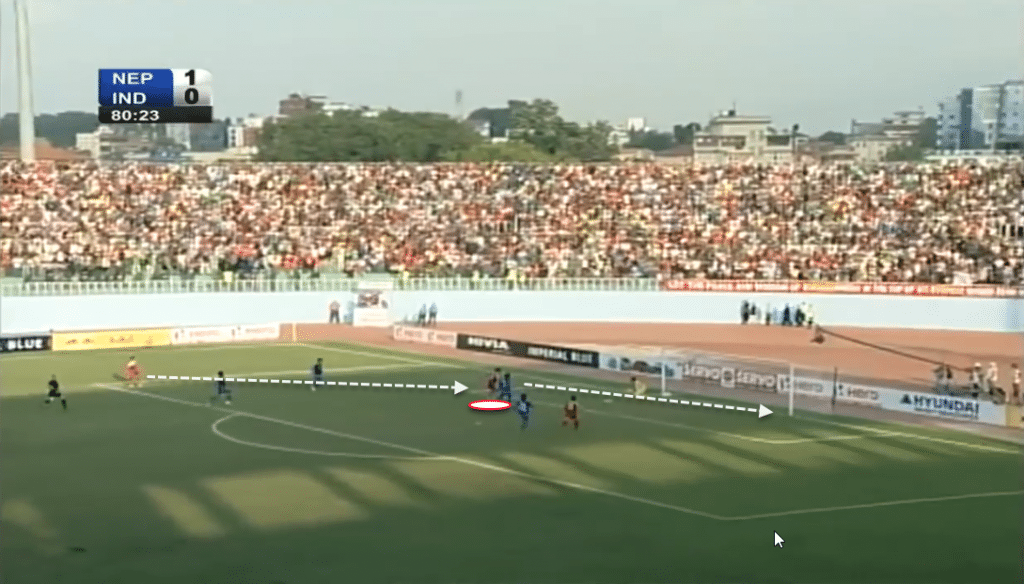
But, things go right for Nepal. Jumanu Rai gets the better of his marker to receive the ball from Rabin Shrestha and flicks it past Subrata Pal towards the far post. Nepal 2-0 India.
India did manage to pull one back, and if it was not for this brilliantly executed Jumanu Rai goal, the teams could’ve settled for a draw, or even worse for the Nepalese side.
